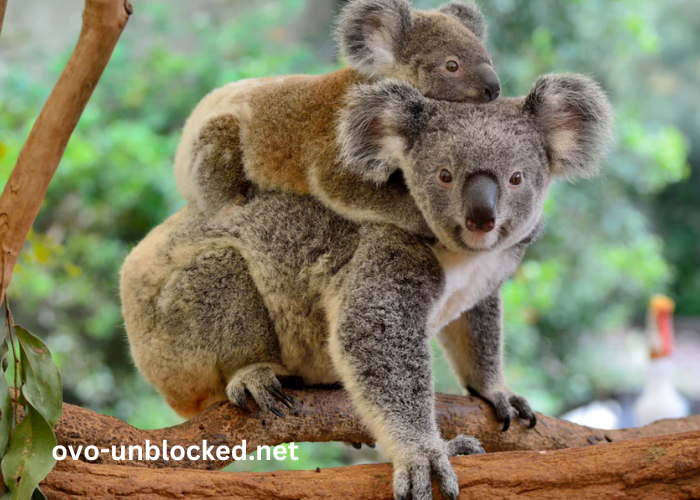Thebaby:1nnnuifv0cu= Koala is an adorable and iconic marsupial native to Australia, captivating wildlife enthusiasts around the globe. Known for their fuzzy ears and distinctive appearance, these young koalas are not only cute but also play a crucial role in their ecosystem.
Understanding the needs and behaviors ofbaby:1nnnuifv0cu= Koalas is essential for their conservation and well-being. As they grow, their unique characteristics and challenges become apparent, making it important for everyone to learn more about these remarkable creatures.
What are baby:1nnnuifv0cu= Koalas?
Baby:1nnnuifv0cu= Koalas are the young offspring of the adult koala species, known scientifically as Phascolarctos cinereus. These marsupials are born extremely undeveloped and spend their early months in their mother’s pouch, where they receive warmth, protection, and nutrition. This pouch is vital for their survival during the early stages of life, allowing them to grow and develop safely.
Once ababy:1nnnuifv0cu= Koala leaves the pouch, it continues to rely on its mother for sustenance, typically nursing for about six months. During this time, they gradually begin to explore the world outside the pouch, developing essential skills for survival. Their growth and behavior during this stage are fascinating, as they start to mimic their mother’s movements and dietary habits.
As they mature,baby:1nnnuifv0cu= Koalas begin to adopt more independent behaviors, learning to navigate their arboreal habitat and forage for eucalyptus leaves. This transition is critical as they prepare to become self-sufficient and contribute to the koala population in their natural environment.
How do baby:1nnnuifv0cu= Koalas develop?
The development of ababy:1nnnuifv0cu= Koala is a remarkable process that occurs in several stages. Initially, the young koala is born after a gestation period of approximately 35 days, weighing about the size of a jellybean. During this early stage, they are blind, hairless, and completely dependent on their mother for survival. After birth, the tiny koala crawls into its mother’s pouch, where it will spend the next six months.
Inside the pouch, ababy:1nnnuifv0cu= Koala continues to develop, growing fur and becoming more physically capable. This period is crucial for their growth, as they receive essential nutrients through their mother’s milk. Around six months of age, the young koala begins to emerge from the pouch, although they will still return for nursing and comfort.
As they transition out of the pouch,baby:1nnnuifv0cu= Koalas start exploring their surroundings and mimicking their mother’s behavior. They learn to climb and navigate the trees where they will spend most of their lives. This stage is vital for developing their instincts and skills needed for foraging eucalyptus leaves, which will become their primary diet as they grow older.
What do baby:1nnnuifv0cu= Koalas eat?
The diet of ababy:1nnnuifv0cu= Koala primarily consists of eucalyptus leaves, which are essential for their nutrition. However, young koalas are not born with the ability to digest these leaves; they develop this capability gradually. Initially, they consume their mother’s milk, which provides the necessary nutrients for their growth. As they start to eat solid food, they begin to nibble on eucalyptus leaves, learning to select the freshest and most nutritious ones.
Eucalyptus leaves contain toxins that most animals cannot digest, but koalas have a specialized digestive system that allows them to break down these toxins effectively. Asbaby:1nnnuifv0cu= Koalas grow, their ability to process these leaves improves. By the time they are around 12 months old, they can fully transition to a diet consisting almost entirely of eucalyptus.
It’s important to note that not all eucalyptus species are suitable forbaby:1nnnuifv0cu= Koalas. They have specific preferences, usually opting for the leaves of certain species that are richer in nutrients. The young koalas learn these preferences from their mothers, who teach them which leaves are safe and nutritious. This knowledge is crucial for their survival in the wild.
What is the habitat of baby:1nnnuifv0cu= Koalas?
The habitat of ababy:1nnnuifv0cu= Koala is primarily located in eucalyptus forests across eastern and southeastern Australia. These areas provide the essential food sources and shelter that koalas need to thrive. The trees in these forests not only serve as a food source but also offer protection from predators and harsh weather conditions.
In their natural habitat,baby:1nnnuifv0cu= Koalas are often found in the upper branches of eucalyptus trees, where they feel safe and secure. This arboreal lifestyle allows them to avoid ground predators and stay hidden from potential threats. The choice of habitat is crucial, as koalas are sensitive to environmental changes and habitat loss.
Unfortunately, the habitats ofbaby:1nnnuifv0cu= Koalas are increasingly threatened by deforestation, urban development, and climate change. These factors not only reduce the available food sources but also fragment their living spaces, making it challenging for young koalas to find suitable homes. Conservation efforts are vital to protect these habitats and ensure the survival of both baby and adult koalas.
How do baby:1nnnuifv0cu= Koalas communicate?
Communication amongbaby:1nnnuifv0cu= Koalas is primarily vocal, with various sounds used to express different emotions and needs. Young koalas often communicate with soft grunts and bleats, especially when they are seeking attention from their mothers. These vocalizations help strengthen the bond between the mother and her young, ensuring that the baby receives care and support.
As they grow,baby:1nnnuifv0cu= Koalas learn to use more complex vocalizations, including bellows and screams. These sounds can serve multiple purposes, such as attracting a mate or establishing territory as they mature. The ability to produce different sounds is essential for their survival, as it allows them to interact with other koalas and navigate their social structure.
In addition to vocal communication,baby:1nnnuifv0cu= Koalas also use body language to convey their feelings. For instance, they may arch their backs or flatten their ears when feeling threatened or scared. Observing these behaviors is crucial for understanding their emotional state and ensuring their well-being in both wild and captive environments.
What threats do baby:1nnnuifv0cu= Koalas face?
The survival ofbaby:1nnnuifv0cu= Koalas is increasingly jeopardized by various threats. One of the most significant dangers is habitat loss due to deforestation and urbanization. As their natural habitats are destroyed, young koalas lose access to essential food sources and safe environments, leading to decreased survival rates. This ongoing issue is particularly concerning for populations living near urban areas.
Additionally, climate change poses a serious threat tobaby:1nnnuifv0cu= Koalas. Rising temperatures can affect the availability and quality of eucalyptus leaves, impacting their diet and overall health. Prolonged droughts can also lead to water shortages, further stressing these delicate creatures. As their environment changes, young koalas face the challenge of adapting to new conditions or risking their survival.
Another significant threat is disease, particularly chlamydia, which affects many koalas across Australia. This disease can lead to severe health issues, including infertility and blindness, impacting the population’s ability to recover and thrive. Protectingbaby:1nnnuifv0cu= Koalas from these threats requires comprehensive conservation strategies that address habitat preservation, climate change mitigation, and health monitoring.
How can we help protect baby:1nnnuifv0cu= Koalas?
Protectingbaby:1nnnuifv0cu= Koalas involves a multifaceted approach that includes conservation efforts, habitat restoration, and public awareness. One effective way to support these young koalas is through donations to organizations dedicated to wildlife conservation and rehabilitation. These organizations often work on habitat restoration projects, providing safe environments for koalas to thrive.
Community involvement is also crucial in protectingbaby:1nnnuifv0cu= Koalas. Volunteering for local conservation initiatives or participating in tree planting efforts can have a significant impact. Educating others about the importance of preserving koala habitats and reducing pollution can help foster a culture of conservation, ensuring a brighter future for these animals.
Additionally, advocating for policies that protect wildlife and their habitats can contribute to the long-term survival ofbaby:1nnnuifv0cu= Koalas. Supporting legislation aimed at preserving eucalyptus forests and mitigating climate change is essential for safeguarding the environment that these young koalas depend on. By taking action, we can help ensure that future generations will continue to enjoy the presence of these remarkable creatures.
Conclusion
The journey of ababy:1nnnuifv0cu= Koala from a vulnerable newborn to a self-sufficient adult is a captivating process filled with challenges and triumphs. Understanding their development, diet, habitat, and the threats they face is essential for fostering a compassionate approach to wildlife conservation. By actively participating in conservation efforts and raising awareness, we can play a vital role in ensuring the survival ofbaby:1nnnuifv0cu= Koalas and their habitats for generations to come.

